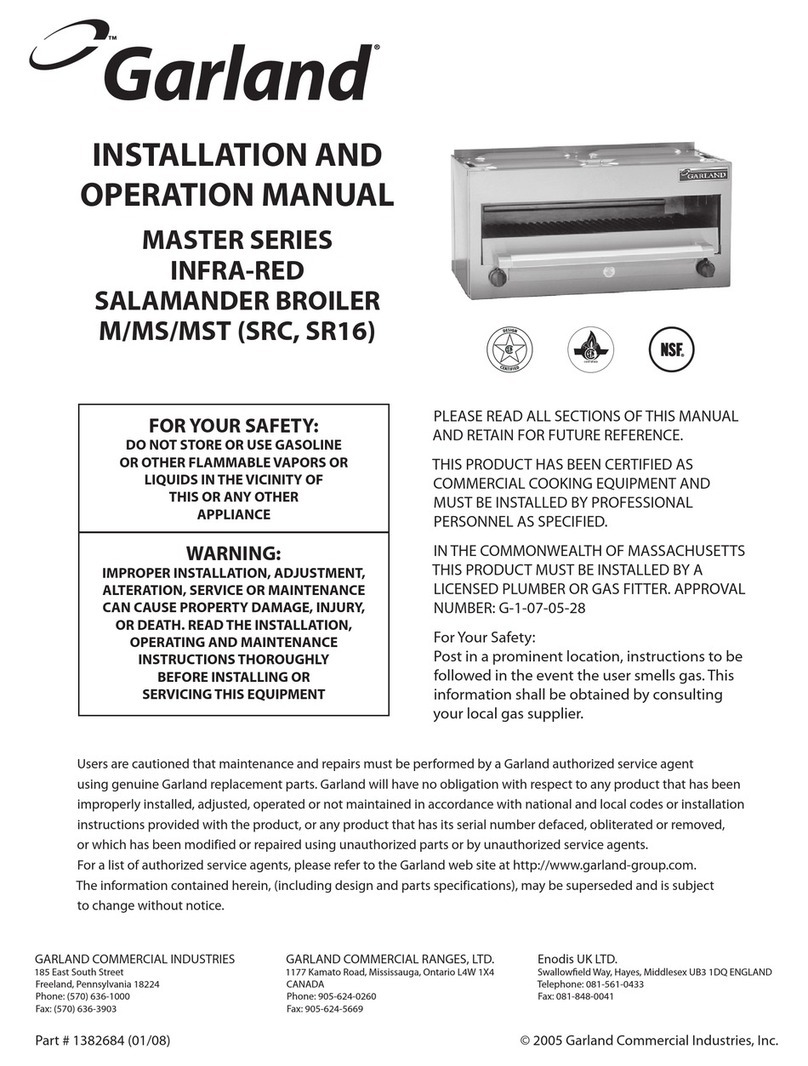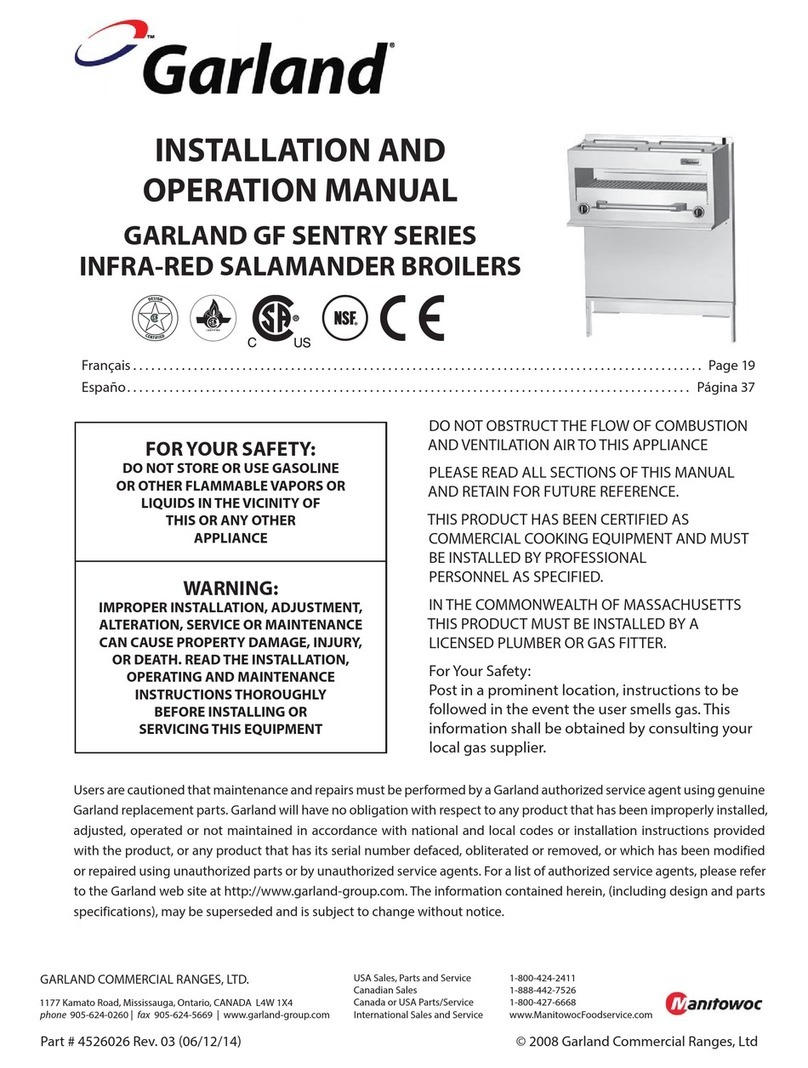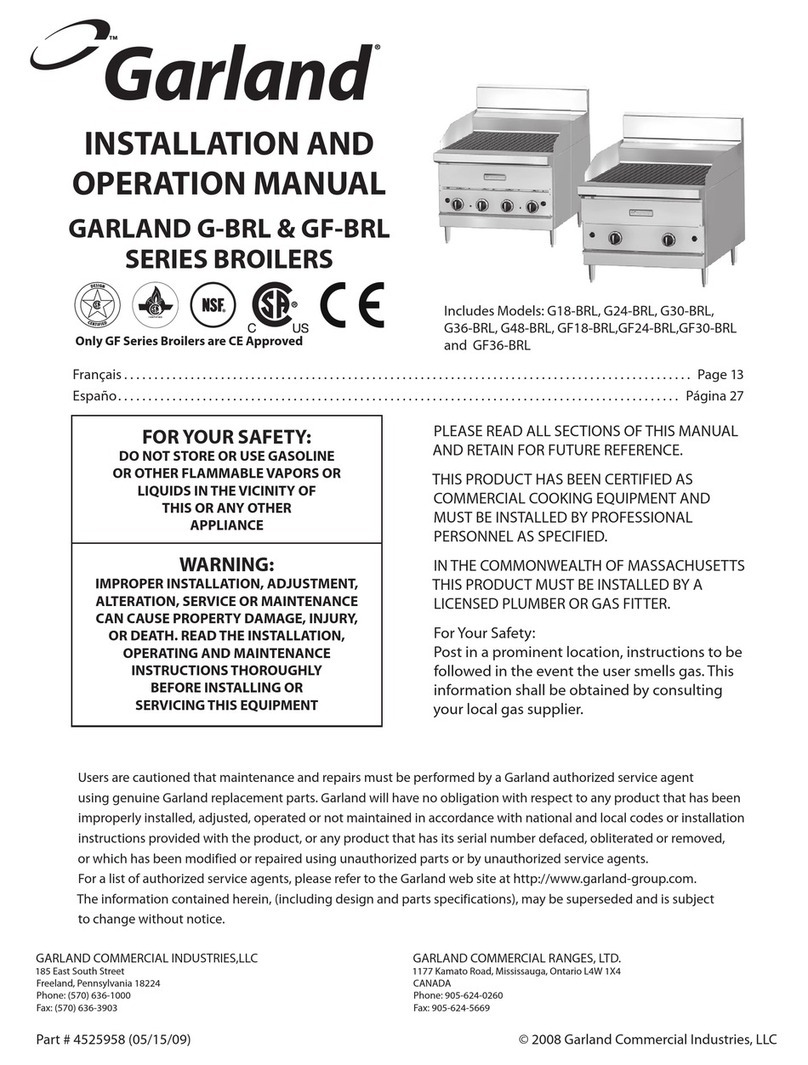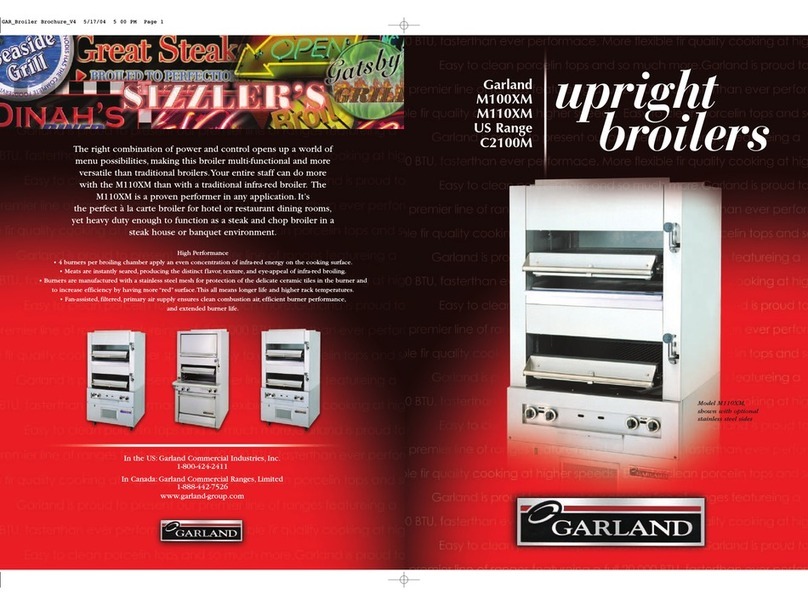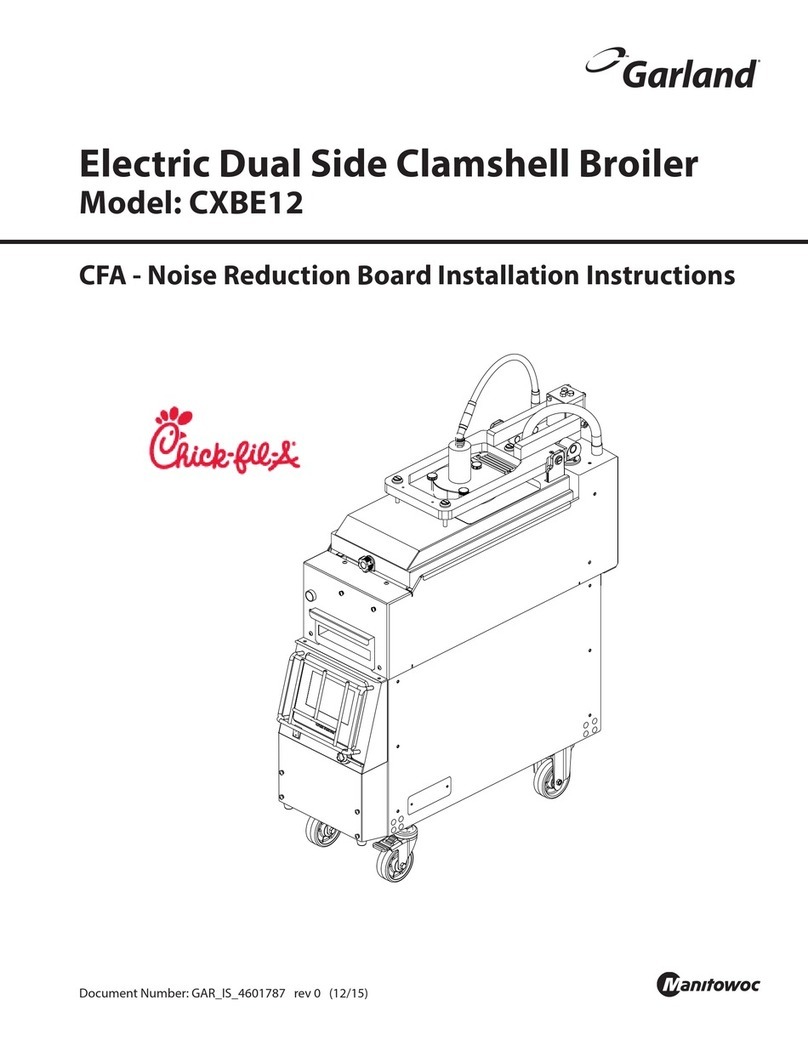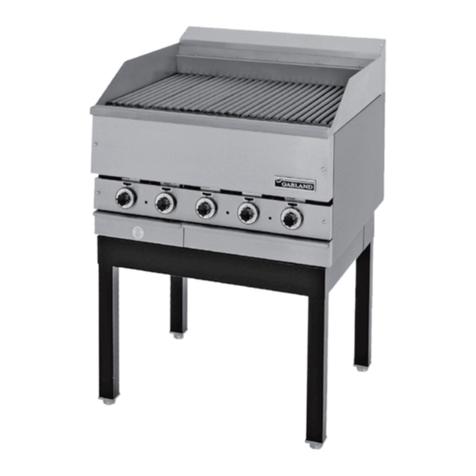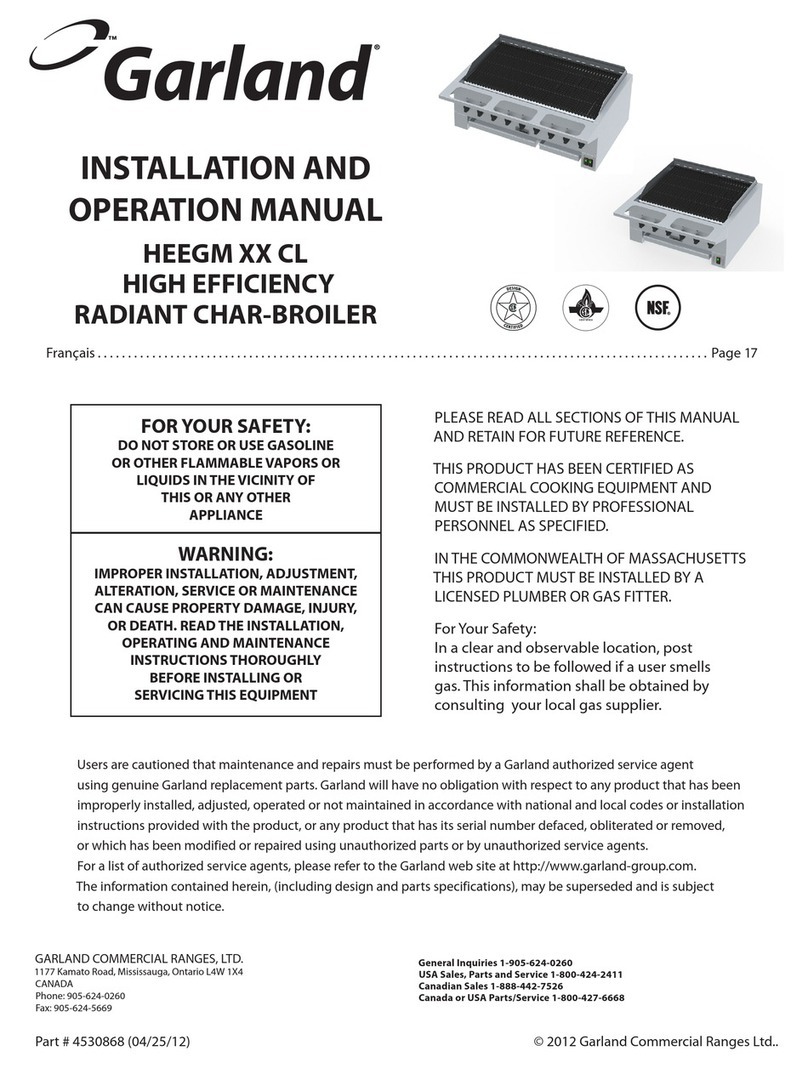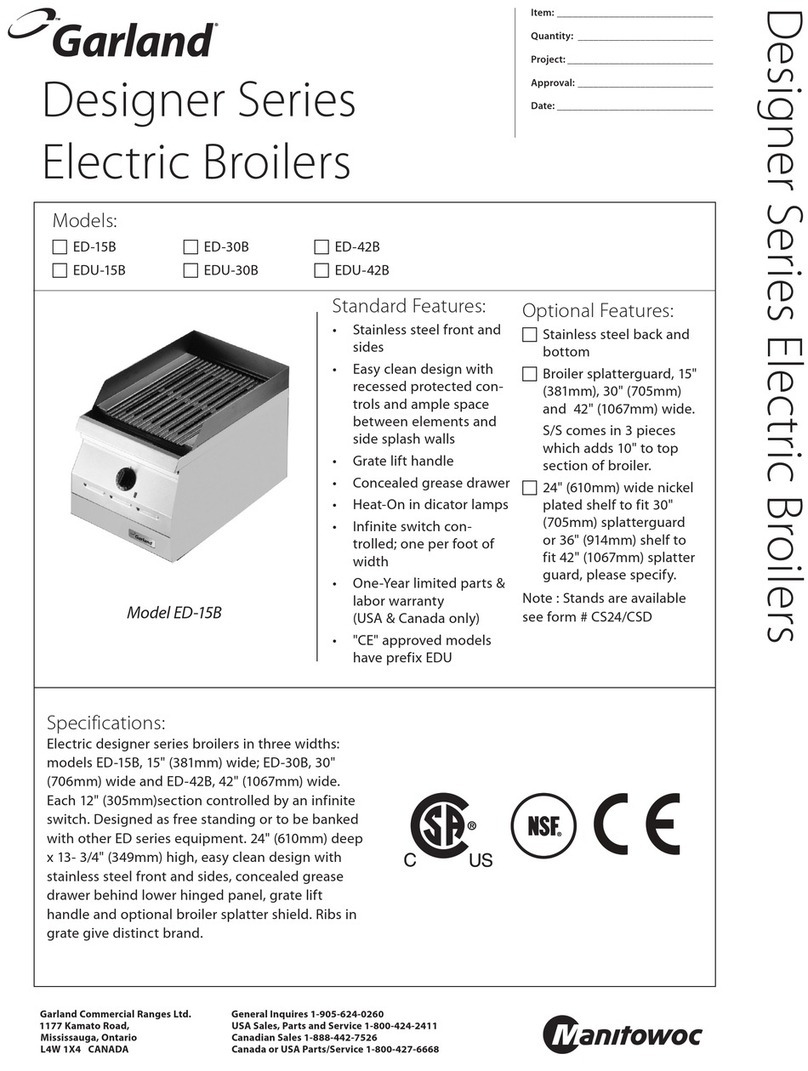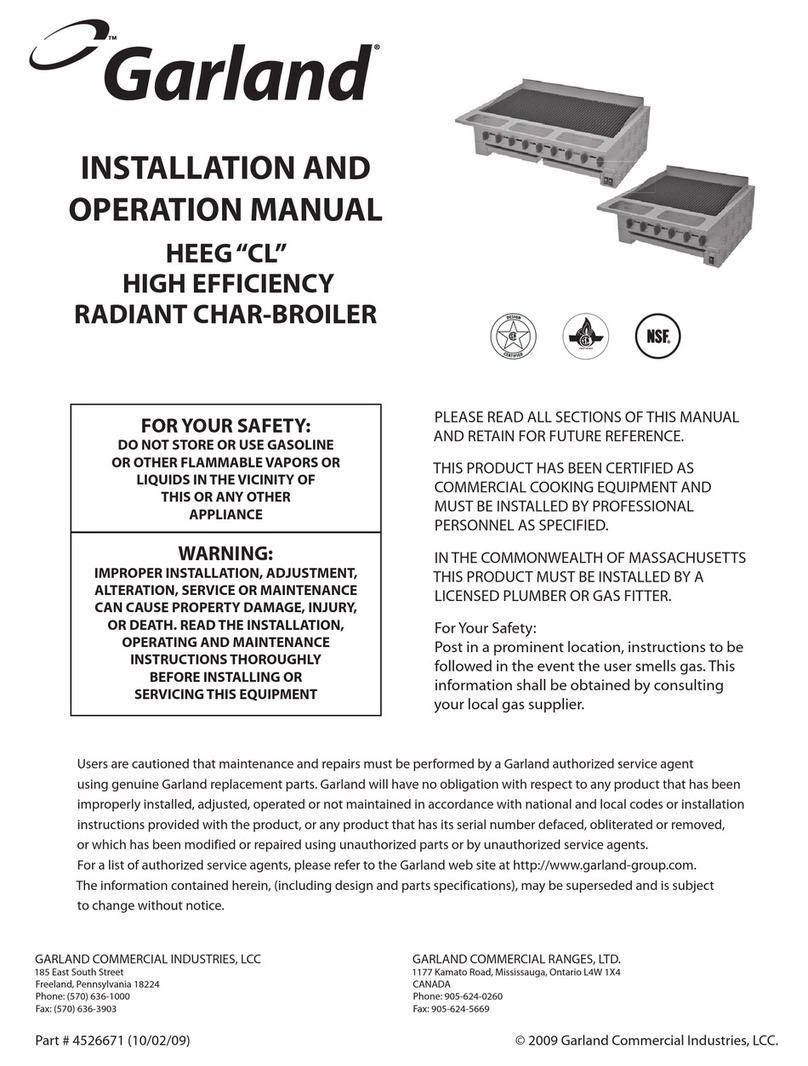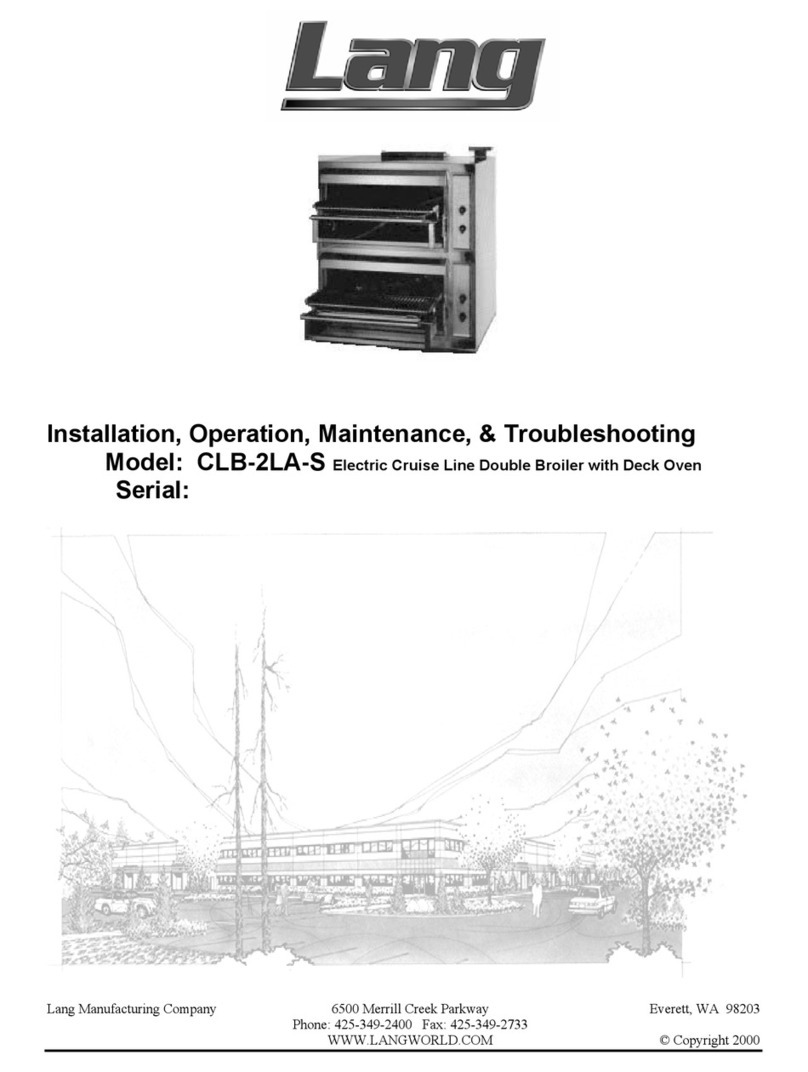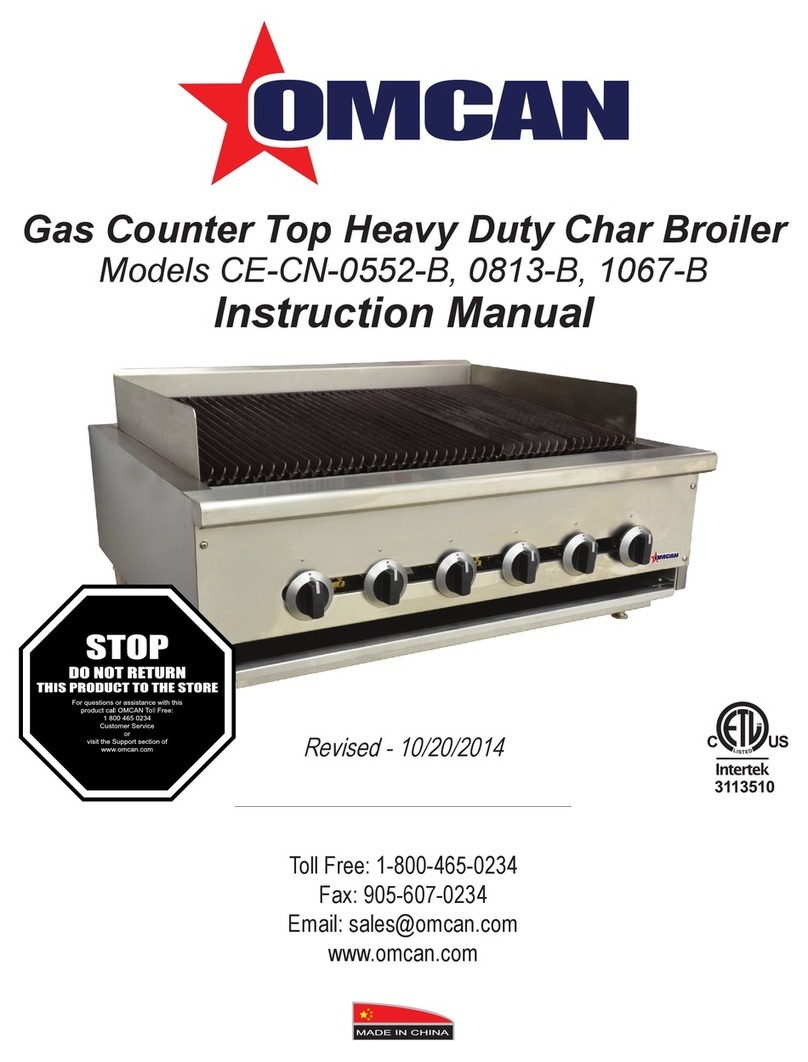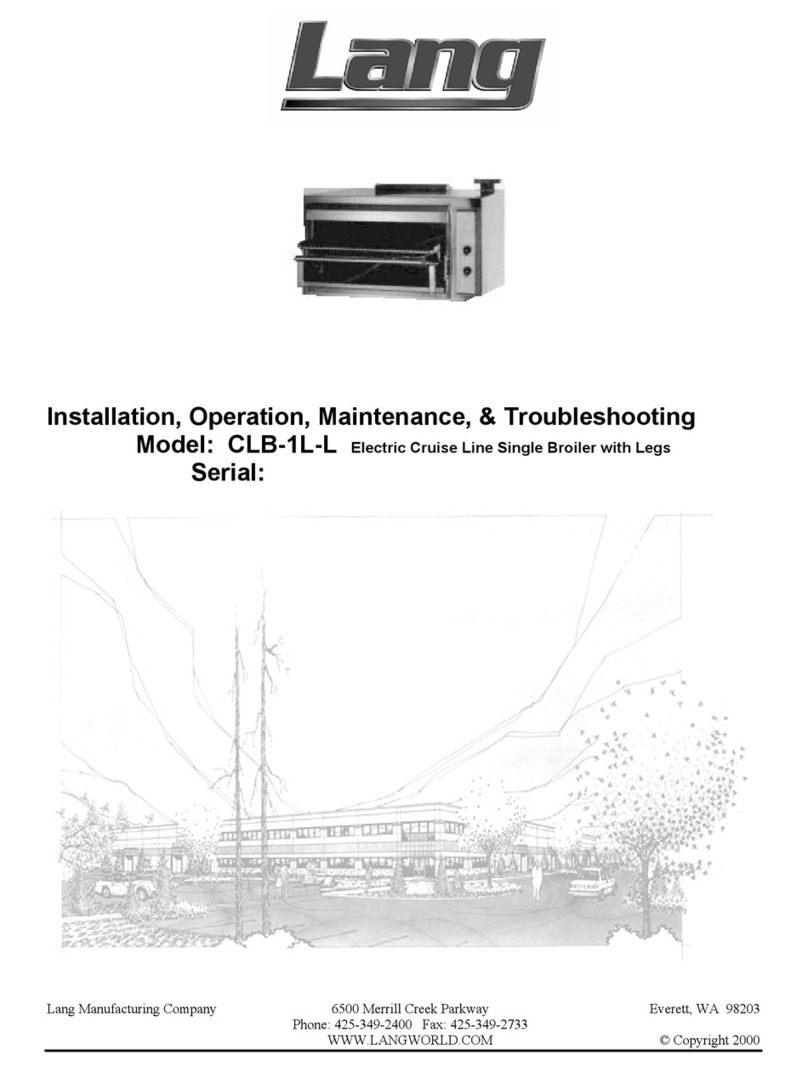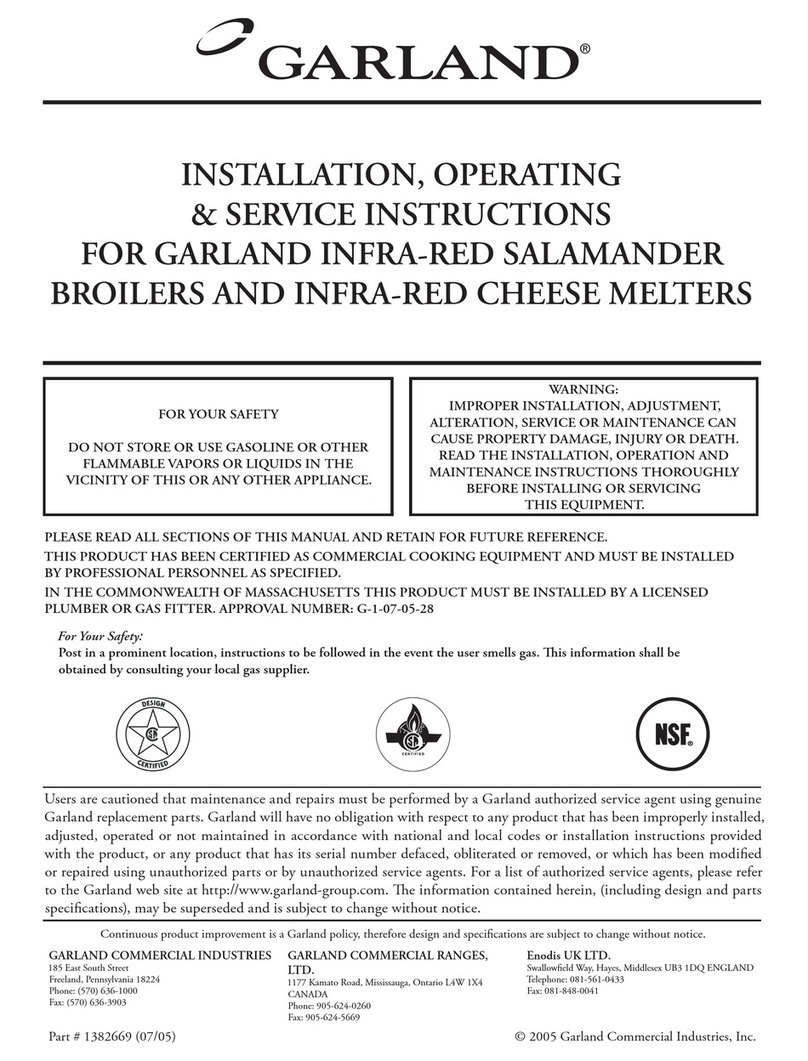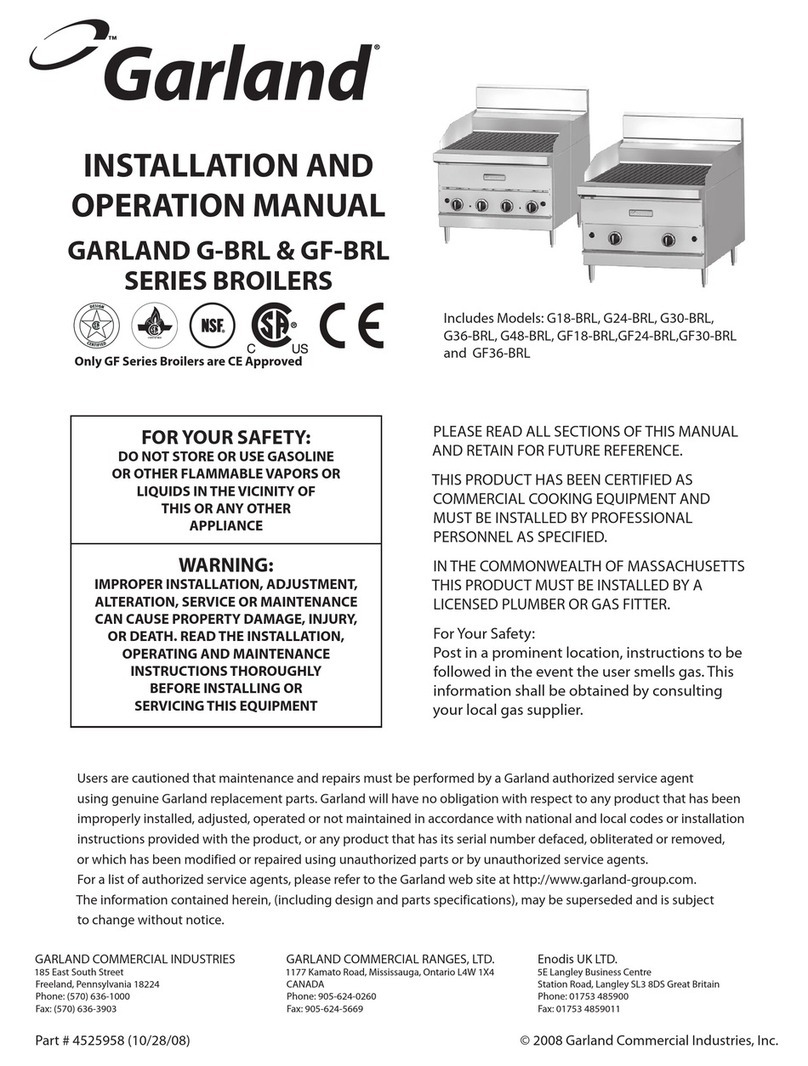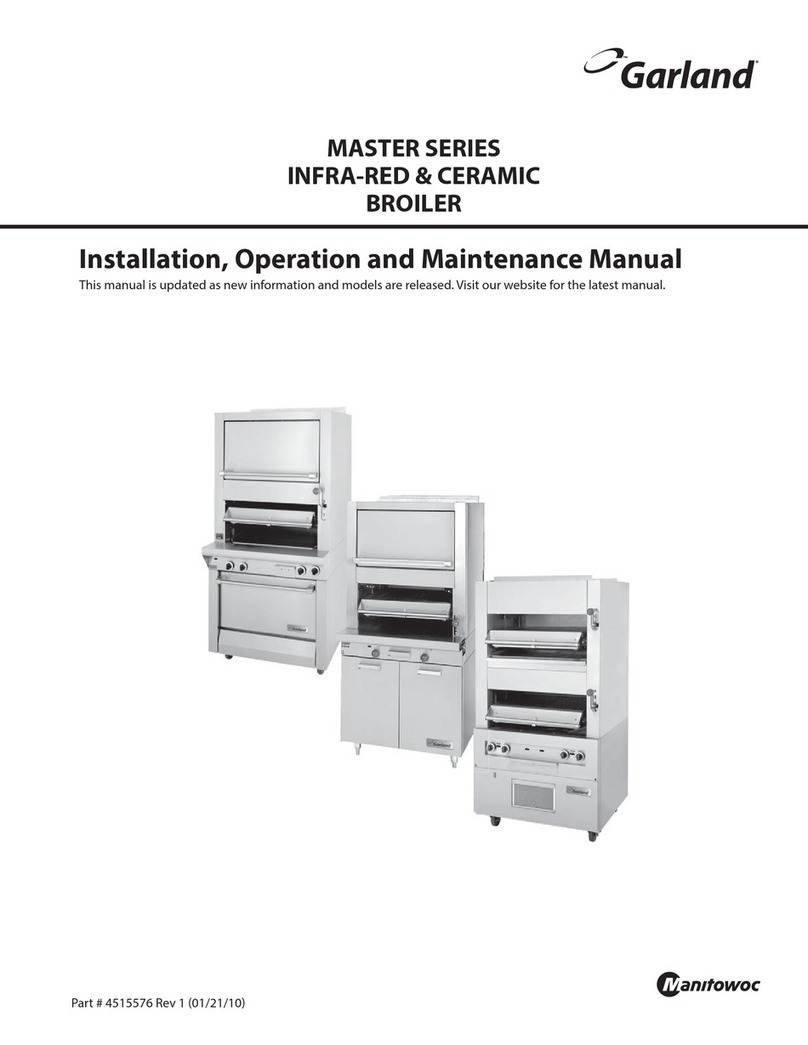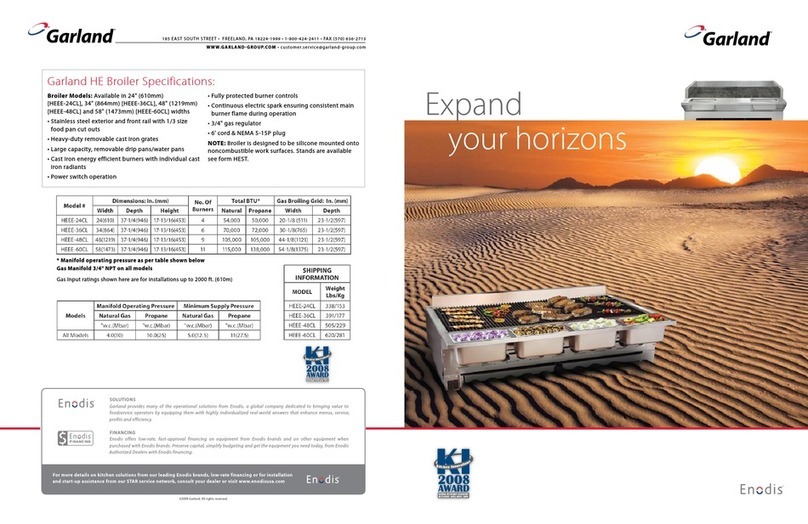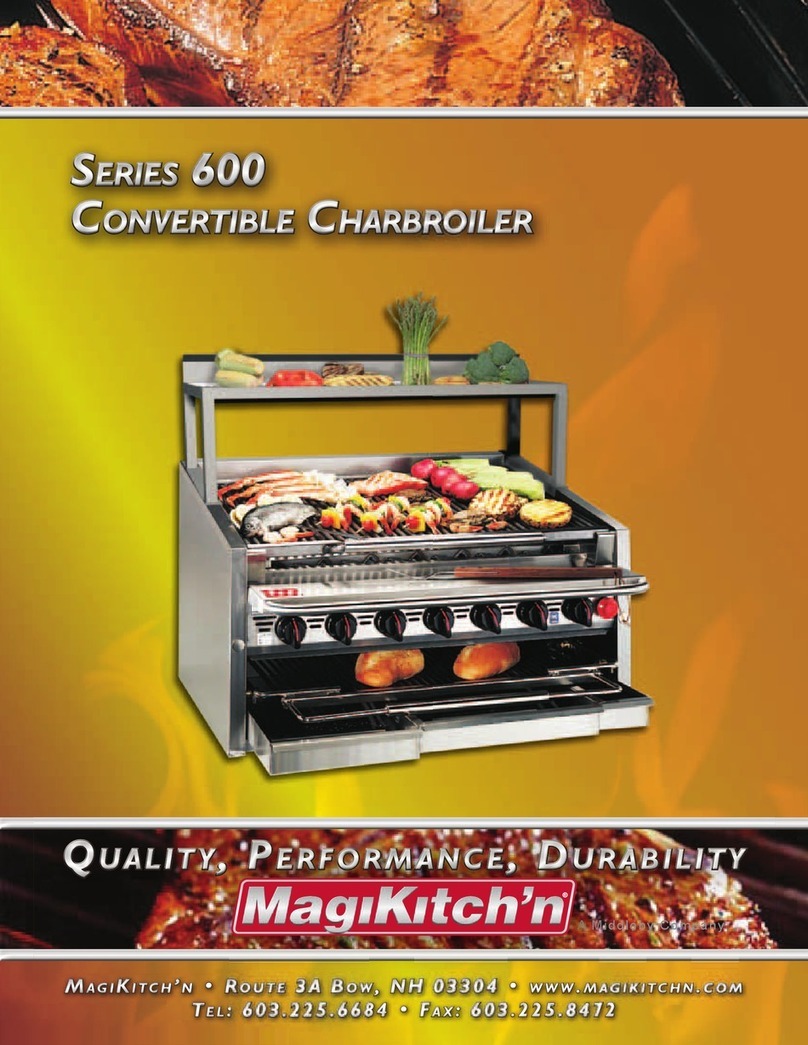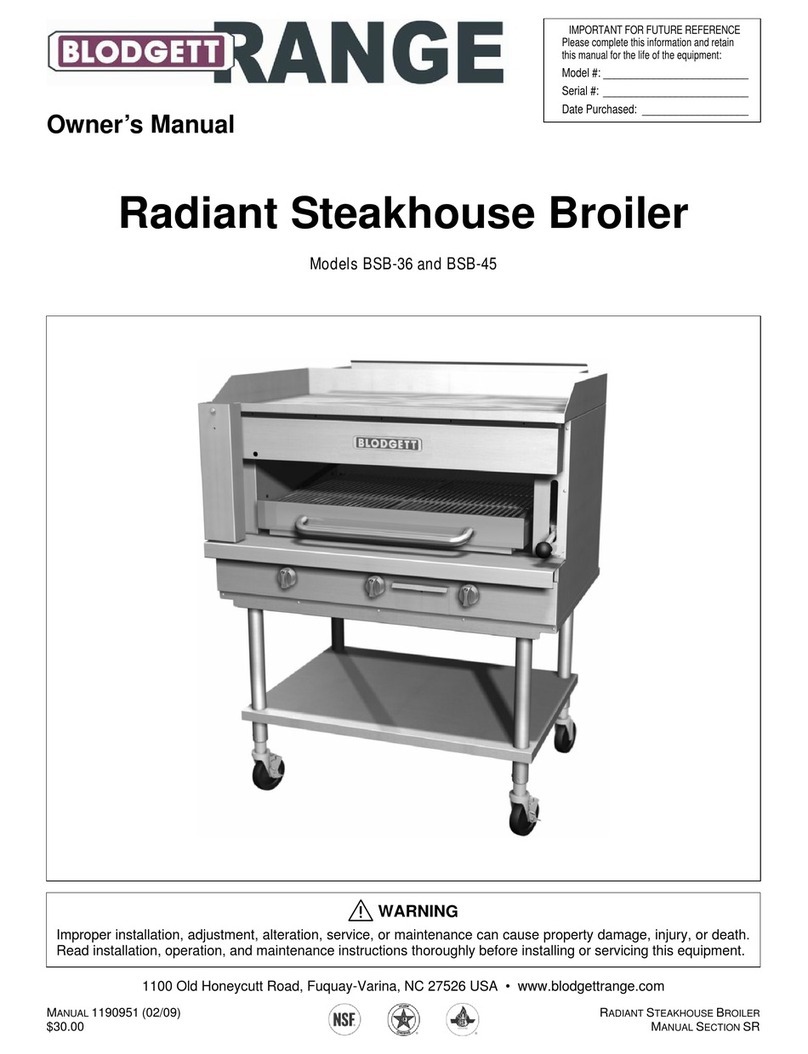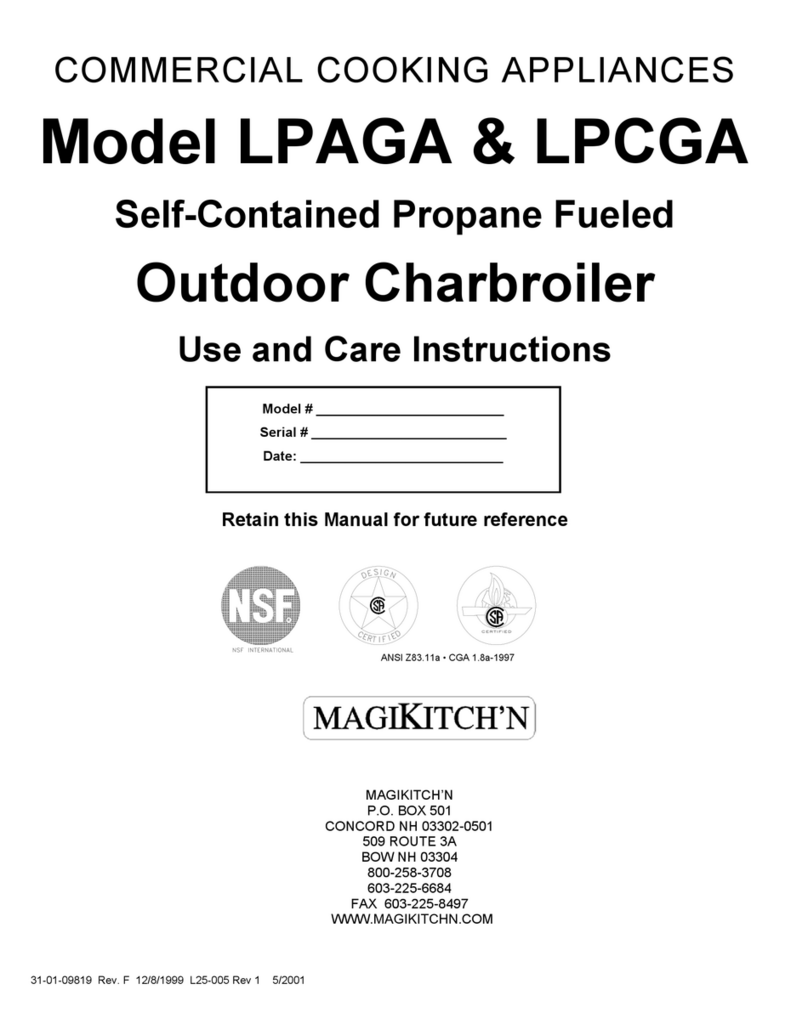
Document #: GAR_IOM_4605246 – 1/21 9
Read This Manual
Garland has developed this manual as a reference guide
for the owner/operator and installer of this equipment.
Please read this manual before installation or operation of
the appliance. A qualified service technician must perform
installation and start-up of this equipment, consult Section 5
within this manual for troubleshooting assistance.
If you cannot correct a service problem, call your Service
Agent or Distributor. Always have your model and serial
number available when you call.
Your Service Agent ____________________________
Service Agent Telephone Number _________________
Your Local Garland Distributor ____________________
Distributor Telephone Number ____________________
Model Number _______________________________
Serial Number ________________________________
Installation Date ______________________________
Unit Inspection
Thoroughly inspect the unit upon delivery. Immediately
report any damage that occurred during transportation to
the delivery carrier. Request a written inspection report from
a claims inspector to document any necessary claim.
Purchaser’s Responsibility
It is the responsibility for the purchaser:
1. To see that the gas and electric services for the grill are
installed on site in accordance with the manufacturer’s
specification.
2. To see that the gas and electric services are connected
properly by a qualified installer of your choice. For
installation in the State of Massachusetts: Installation
of this grill must be performed by a licensed plumber or
gas fitter. All such connections must be in accordance
with applicable code requirements. Refer to “Installation
Requirements” section for specific information.
3. Garland advises that you season the cooking bars
before placing any food on them; this will remove any
manufacturing oils and also smooth the natural pitting
created from freshly cast mouldings. Seasoning your
cooking bars with a light oil, such as vegetable oil, can
smooth out the pitting and stop any food from sticking.
Fresh, unoiled cast iron cooking bars are also prone to
rust if you do not season them from the start. Rusting of
cooking bars from lack of seasoning will not be covered
by warranty.
4. Arrange for an Authorized Sevice Technician to inspect
and confirm correct operation of the unit. Do not
attempt to operate the grill until connection of utility
service has been fully inspected by an Authorized
Service Technician or a Garland Foodservice Products,
LLC Service Representative. This service is required by
Garland Foodservice Products, LLC in order to assist the
purchaser in proper start-up of the grill on site. Please
note the specific details on the Warranty and make
certain connections are made to proper utility services.
5. The warranty shall not apply if the unit is operated prior
to installation being inspected by an Authorized Service
Technician or a Garland Foodservice Products, LLC
Service Representative.
Additional Requirements
• It is required that the unit be installed under a ventilation
hood to provide for adequate air supply and ventilation.
• Minimum clearances must be maintained from all
walls and combustible materials. See “Clearance
Requirements” section for more information.
• Keep the grill free and clear of combustible material.
• Do not obstruct ventilation holes on the unit, as these
provide cool air for the electronics and fresh air for
combustion.
• Only connect and operate the unit on the type of gas
and/or electricity listed on the rating plate.
• This manual should be retained for future reference.
• This appliance is for professional use only and should be
used by qualified people.
Section 1
General Information
